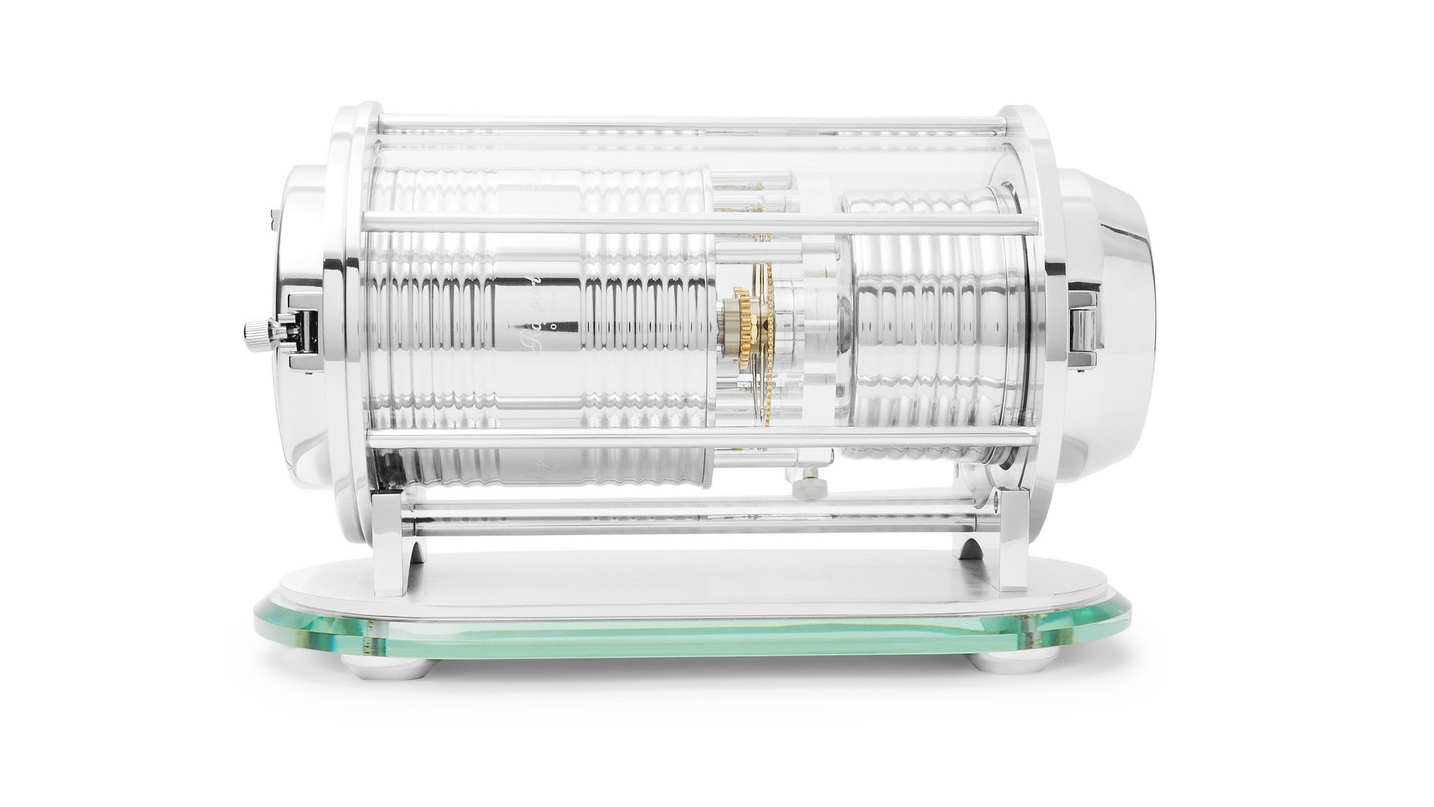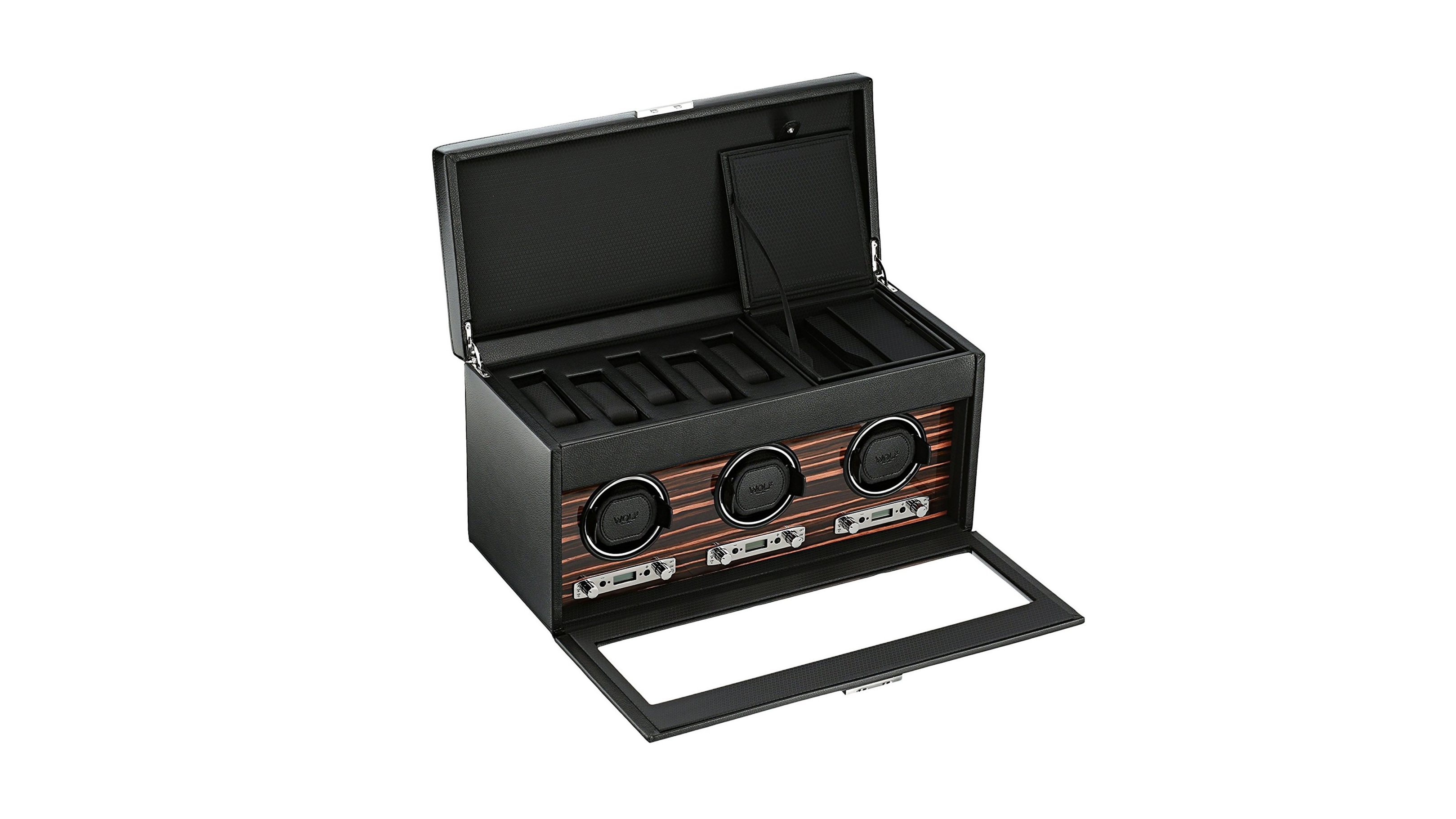

To prevent the watch from running out of power, it can be placed in a winder, preferably one of the best watch winders money can buy. These come in all shapes and sizes (with a huge range of prices to match) but essentially all do the same thing: they rotate your watch periodically to keep the mainspring wound and the movement ticking. Individual winders are relatively small boxes designed to hold a single watch. More elaborate – and expensive – options include space for several watches, and some even double as safes, providing secure storage for a wide range of watches, jewellery and accessories.
If you're new to the world of watches, then it's helpful to understand how a watch works to determine whether you actually need a watch winder. Mechanical watches with an automatic, self-winding movement use a rotor that turns with the movement of your wrist, winding the mainspring which then slowly deploys that energy to keep the watch running. Watches tend to have a power reserve of a couple of days or so, meaning they can keep accurate time for that long without being worn.
But if they are left any longer, the mainspring is exhausted and the movement stops. Next time you wear the watch, it will need winding up (or moving to rotate the rotor a few times) and all of its complications will need setting. This is the work of a few seconds to correct just the time, but if your watch has complex perpetual calendar and moon phase complications, it can be a chore.
Can a watch winder damage your automatic watch?

The answer is, generally, no. So long as the winder only turns a set number of times each day, known as the TPD (turns per day), then your watch is at little risk of being damaged. A common misconception is that the winder keeps the watch mainspring fully wound, and that damage could be caused by constantly feeding energy into it.
This is incorrect on a couple of counts. Firstly, watches use a slip clutch to prevent them from being over-wound. Once fully wound, the slip clutch allows the winding mechanism to be turned, but without it tightening the mainspring any further. Secondly, if the watch winder is set to the correct TPD, then it is only rotating the watch enough to keep it wound to the same level. In other words, the watch is only rotated enough times to replenish the energy used to keep time since it was last turned.
Simply make sure the winder is compatible with your watch, and the rate at which it rotates can be adjusted, and you will be fine.
It is also commonly thought that a watch movement in constant use is more likely to be damaged than one used sparingly. The answer here varies depending on the model and age of the watch, and how well it has been maintained over the years.
Sign up to the T3 newsletter for smarter living straight to your inbox
Get all the latest news, reviews, deals and buying guides on gorgeous tech, home and active products from the T3 experts
But it is generally the case that watch movements run more smoothly when they are used regularly, as this keeps the gears and other components lubricated. Like a classic car, your mechanical watch also needs regular maintenance and should be sent away for a service as per the manufacturer’s guidelines – for example, a Rolex should be serviced approximately every 10 years.
Protecting your watch from magnetism
Another final detail to consider is damage caused to your watch movement by its close proximity to magnets inside the winder. Magnetism can cause a watch to lose accuracy, or even lead to serious damage to watch movements that are not adequately protected. Quality watch winders prevent this from happening by shielding their internals with a steel frame that acts as a Faraday cage.
Owners of professional watches designed to withstand strong magnetic fields, like the Rolex Milgauss and Omega Railmaster, needn’t worry about this, but then we suspect owners of such timepieces will avoid a low-cost and potentially low-quality watch winder in the first place.
That is perhaps the key to buying a watch winder: avoid the cheapest option that may overwind the movement or expose it to magnetism, and instead go for a reputable brand that you can trust to take good care of your watch – such as one of the models recommended in T3's best watch winder guide.
Liked this?
- T3's guide to the best watches for men
- The best watches under £1000
- 5 best watches to invest in right now
Alistair is a freelance automotive and technology journalist. He has bylines on esteemed sites such as the BBC, Forbes, TechRadar, and of best of all, T3, where he covers topics ranging from classic cars and men's lifestyle, to smart home technology, phones, electric cars, autonomy, Swiss watches, and much more besides. He is an experienced journalist, writing news, features, interviews and product reviews. If that didn't make him busy enough, he is also the co-host of the AutoChat podcast.

